STORY HIGHLIGHTS
- NEW: 116,000 customers are without power in seven states
- NEW: President Barack Obama meets with advisers on storm; urges public to heed warnings
- Sandy brings "most catastrophic event" in our lifetimes, Connecticut governor says
- The storm is likely to spawn flooding, snowstorms and massive power outages
Hurricane Sandy could affect as many as 60 million people.
"This is the most catastrophic event that we have faced and been able to plan for in any of our lifetimes," Connecticut Gov. Dan Malloy said.
An expected storm surge at midnight could raise water levels to 11 feet above normal high tide, bringing "the potential to cause unprecedented damage."
As of Monday afternoon, 116,000 customers were without power in seven states.
 Obama hurricane warning: 'Please listen'
Obama hurricane warning: 'Please listen' 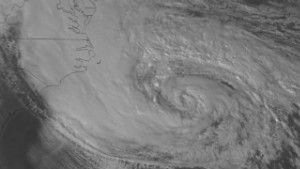 ISS flies over Hurricane Sandy
ISS flies over Hurricane Sandy  See damage inside cruise ship from Sandy
See damage inside cruise ship from Sandy 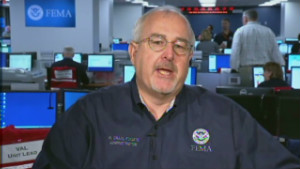 Fugate: People need to be safe
Fugate: People need to be safe
Officials across the Eastern Seaboard had implored residents over the weekend to evacuate, emphasizing that authorities could be endangered if they tried to save them. New Jersey Gov. Chris Christie put it bluntly: "Don't be stupid. Get out!"
Hundreds of thousands of people have abandoned their homes. New York City landmarks are eerily empty. The nation's capital is emptied of government workers.
Forecasters said Sandy was likely to collide with a cold front and spawn a "superstorm" that could generate flash floods, snowstorms and massive power outages from North Carolina to Maine.
The National Grid, which provides power to millions of customers, said 60 million people could be affected.
"It could be bad," said U.S. Coast Guard Rear Adm. Steven Rattior, "or it could be devastation."
The predicted impact extends beyond the East Coast. Wave heights in Lake Michigan could reach 28 feet Monday night and 31 feet by Tuesday, the National Weather Service said.
Eight days before Election Day with both candidates locked in a tight race, President Barack Obama and his Republican challenger Mitt Romney canceled or changed planned campaign events because of the storm.
Obama returned to Washington on Monday from Florida and went directly to a White House Situation Room briefing on the storm. He then told reporters that he was confident that assets had been positioned for an effective response to the aftermath of the storm.
He, too, urged those in the path of the storm to heed warnings and other instructions.
"The most important message I have for the public right now is please listen to what your state and local officials are saying," Obama said. "When they tell you to evacuate, you need to evacuate."
 Delaware orders driving restrictions
Delaware orders driving restrictions 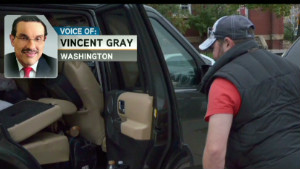 DC mayor: Sandy could cause 'havoc'
DC mayor: Sandy could cause 'havoc' 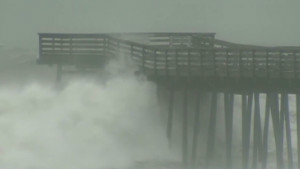 Mayor: Biggest concern the floodwater
Mayor: Biggest concern the floodwater 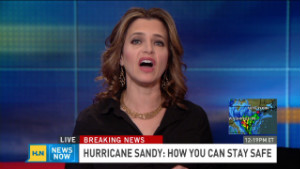 Preparedness in storm's path
Preparedness in storm's path
In Avon Lake, Ohio, Romney asked supporters to drop off items and cash at his "victory centers" to be donated to victims of the storm.
"There are families in harm's way that will be hurt -- either in their possessions or perhaps in something more severe," Romney said.
The campaign canceled events that had been planned for later in the day and Tuesday for Romney and his running mate, Rep. Paul Ryan.
Sandy claimed at least 67 lives -- 51 in Haiti -- on its path last week across the Caribbean.
On Monday, Sandy started to turn toward the United States, putting it on course for landfall late Monday or early Tuesday.
At 11 a.m., the Category 1 hurricane was 205 miles southeast of Atlantic City, New Jersey, and 260 miles south-southeast of New York City, the National Hurricane Center said. Maximum sustained winds were 90 mph, and Sandy was moving north-northwest at 18 mph.
Hurricane-force winds extended outward 175 miles from the storm's center, and tropical storm-force winds reached 485 miles.
It was predicted to turn toward the northwest during the day, and then turn toward the west-northwest Monday night. Its center was expected to make landfall along or just south of the coast of New Jersey on Monday evening or night.
Gale-force winds were already occurring over parts of the Mid-Atlantic states -- from North Carolina up to New York's Long Island. The winds were expected to spread later in the day over more of the Mid-Atlantic coast, New York City and southern New England.
Storm surge -- the combination of a storm and a high tide -- "will cause normally dry areas near the coast to be flooded," the weather service said. It said water depths could reach 6 to 11 feet along Long Island Sound and New York Harbor.
"Elevated waters could occur far removed from the center of Sandy," it added.
Three to six inches of rain were expected over far northeastern North Carolina, with isolated maximum totals of eight inches possible, it said.
Four to eight inches of rain were expected over portions of the Mid-Atlantic states, with isolated amounts of 12 inches possible.
Two to three feet of snow were expected to accumulate in the mountains of West Virginia and one to two feet in the mountains of southwestern Virginia to the border with Kentucky. One to one-and-a-half feet of snow were expected in the mountains near the North Carolina-Tennessee border.
But even with Sandy hundreds of miles offshore, officials were warning of its life-threatening storm surge flooding portions of the Mid-Atlantic, including low-lying areas of New York and New Jersey.
Michelle Franchaise of Ocean Gate was among the tens of thousands of New Jersey residents ordered to leave their coastal communities Sunday.
She and more than 180 others hunkered down at an emergency shelter in Toms River, New Jersey, to ride out the storm. She selected one of the 250 green cots that lined the floor.
"I'm very concerned when I see the map, and I see how big it is," she said. "I think I'm in good hands here. I think I'm safe."
At least 60 people at the Toms River shelter took their pets with them.
"The cops came around and were like, 'If you don't leave, you're going to be arrested,' " said a woman as she cradled one of the four kittens she had taken with her. "I couldn't leave without them."
Bracing for the worst
By early Monday, the city that never sleeps bedded down after halting service on its bus and train lines, closing schools and ordering about 400,000 people out of their homes in low-lying areas of Manhattan and elsewhere.
The process of halting subway service in New York began Sunday night. Other mass transit systems suspended their services Monday, including Washington's Metro service and Southeastern Pennsylvania Transportation Authority trains and buses in and around Philadelphia.
In Sea Bright, New Jersey, Yvette Cafaro scrawled a plea on the plywood that covered her burger restaurant: "Be kind to us Sandy."
The seaside area largely dodged last year's Hurricane Irene, and Cafaro is hoping for another reprieve, but not optimistic.
"Everything that we've been watching on the news looks like this one will really get us," she said. "We're definitely worried about it."
After filling his trunk with sandbags Sunday in Cranston, Rhode Island, resident Steve Pacheco said he had done what he could by clearing Halloween decorations and other items from his yard. Still, he said, he was nervous.
"I don't want to go through this again," Pacheco told CNN affiliate WPRI-TV in Providence.
The estimated cost of potential wind damage alone is estimated at $2.5 billion to $3 billion, the Federal Emergency Management Agency said.
That estimate doesn't include potential flooding and other damage, though the federal government has preemptively declared states of emergency in a number of locales to help states cope with Sandy and its aftermath.
Classes, trading and campaigning canceled
Officials canceled classes Monday for more than two million public school students in districts such as New York, Philadelphia, Boston and Baltimore, while numerous universities and federal offices in Washington and government offices in states like New Jersey were closed.
The U.S. stock exchanges were closed Monday and may remain closed Tuesday.
The last time the New York Stock Exchange closed for a weather event was in 1985, during Hurricane Gloria. And in 1969, a snowstorm also brought the exchange to a halt.
Although official Washington was shut down, the Supreme Court heard oral arguments.
Politicos from both sides ahead of next week's election said it was still too early to tell what effect the storm would have on the presidential race, though access to voting centers would be a concern if the storm's effects persist.
"I don't think anybody really knows," top Obama adviser David Axelrod said Sunday on CNN's "State of the Union."
"Obviously, we want unfettered access to the polls because we believe that the more people come out, the better we're going to do, and so, to the extent that it makes it harder, you know, that's a source of concern."
Virginia's Republican governor said Sunday that his state would take measures to ensure residents are able to vote despite obstacles the storm might bring. Virginia is one of a handful of battleground states.
Travel nightmares
Then there are the travel nightmares related to the storm -- thousands of flights have been canceled, Amtrak train runs scuttled and hundreds of roads and highways expected to flood.
"This is not a typical storm. It could very well be historic in nature and in scope and in magnitude because of the widespread anticipated power outages, flooding and potential major wind damage," Pennsylvania Gov. Tom Corbett said.
"Essentially, this is a hurricane wrapped in a 'nor'easter.'"








































No comments:
Post a Comment